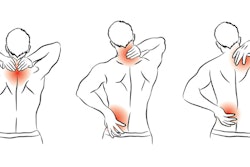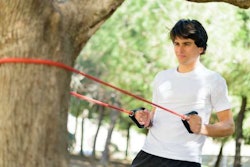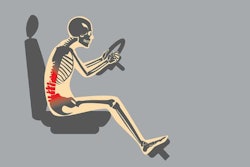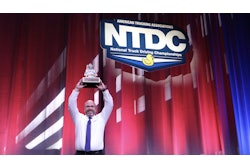

EDITOR’S NOTE: Being seated all day long is both a requirement of the job and one of the health concerns associated with driving a truck. This is a two-part series on the health issues associated with being seated for hours at a time and what you can do to deal with the problem. Read the first installment in the series.
Sitting all day may come with serious consequences, but there are steps truckers can take to prevent them. Getting a custom seat is just one option, and if you can’t afford one or can’t make modifications to your truck you can still use certain methods to lower your risks for sitting-related health concerns.
 Sitting in the driver’s seat all day could be hurting your health, but there are preventative measures you can take.
Sitting in the driver’s seat all day could be hurting your health, but there are preventative measures you can take.Fighting back
The simplest advice for combatting the health risks of prolonged sitting at work: Stand up frequently. Specifically, that would be about 20 minutes seated, followed by eight minutes standing and two minutes moving, based on research from ergonomics professor Alan Hedge at Cornell University, cited recently in The New York Times.
Since long-haul drivers have limited opportunities for getting out of the seat, they have to get more creative.
One of the best habits is to make the most of every stop. If you don’t have time to exit the cab, get out of the seat and stretch. If you’re out of the cab, even if you’re just fueling, stretch and take a walk or get in a few push-ups or other exercises to work out your muscles and joints.
Strengthen your back
Even if you do little in the way of strenuous loading and unloading, the sedentary lifestyle is hard on the back, shoulders and neck. The North American Spine Society recommends exercises like these to decrease the likelihood of back injury:
- NECK STRETCHES: Nod your head, slowly bringing your chin toward your torso. Slowly move your head side to side, aligning your chin with your shoulders. Slowly move your head side to side, bringing your ears over your shoulders. Repeat these five times.
- FRONTAL CORE STRETCH: Standing, with your abdominal muscles tightened, reach overhead with your arm, shifting your hips as you move. Repeat 10 times. Alternate sides.
- BACKWARD BENDING: Standing, place your hands above your buttocks. Bend your head and shoulders backward, moving your hips forward to maintain balance. Return to original position. Repeat 10 times.
- PRESS UP: Lie on your stomach and push up, straightening your elbows as much as you can so that your back arches, your hips and legs remaining on the ground. Support yourself with your arms, not your back. Hold the position before lowering back. Repeat 10 times.
- SHOULDER ROLLS: Straighten your spine and neck. Lift your right shoulder, roll it down and forward. Repeat the same sequence for your left shoulder. Repeat three times for each shoulder, and then rolling three times in the opposite direction. Then shrug your shoulders toward your ears and back down five times.
Improve your body’s overall strength
Adults need at least 150 minutes per week of moderate-intensity aerobic activity, including some overall muscle-strengthening activities a few days a week, says the Centers for Disease Control. While many exercises fall under that broad umbrella, these are particularly good for relieving and preventing back pain, says the North American Spine Society. They require no equipment.
- SIDE BRIDGE: Begin on your side with knees at a 90-degree angle, and prop yourself up on your elbow. Lift your hips up, and keep your head, shoulders and hips straight. Hold the lifted position for 10 seconds before lowering. Repeat one to five times on each side.
- NECK PRESSES: In each of these, hold the press for 10 seconds, and repeat six times. Press your palm against your forehead, and use your neck to press back. Do the same with the other palm. Press your palm against your temple, and use your neck to press back. Do the same with the other side. Cup your hands behind your head. Use your neck to push back into your cupped hands.
- PLANK: Get on your knees and elbows, keeping your shoulders, hips and knees in a straight line. Maintain the lifted position for 10 seconds, and then relax. Repeat five times.
- ABDOMINAL CRUNCH: Get on your back with your knees bent. Lift your chest up toward your knees, exhaling. Repeat 10-15 times or until fatigued.
Other preventative steps you can take
- STAY HYDRATED: Hydration might not seem related to sedentary lifestyle issues, but it is.
“By staying hydrated, we’re actually keeping our discs healthier,” says Michael Gleiber, an orthopedic spine surgeon with the American Academy of Orthopedic Surgeons. “They don’t have their own blood supply.” In addition to a steady intake of water, he recommends drivers avoid too much caffeine, as it dehydrates.
Hours of running a heater or air conditioner in a truck cab can lower the humidity too much. That can be countered with a portable humidifier. Some can be powered from a dashboard outlet.
- ARRANGE YOUR WORK SPACE: To limit rotating your neck, try to keep objects you might need within easy reach.
- IMPROVE LEG CIRCULATION: To mitigate the risk of forming blood clots or deep vein thrombosis, Gleiber recommends drivers regularly tap their feet, such as to music. This pumps blood through the legs and can help prevent a clot.
- WATCH YOUR POSTURE: Avoid leaning into the wheel while driving. Don’t keep a wallet or anything lumpy in a back pocket, because it can throw the spine out of alignment.










